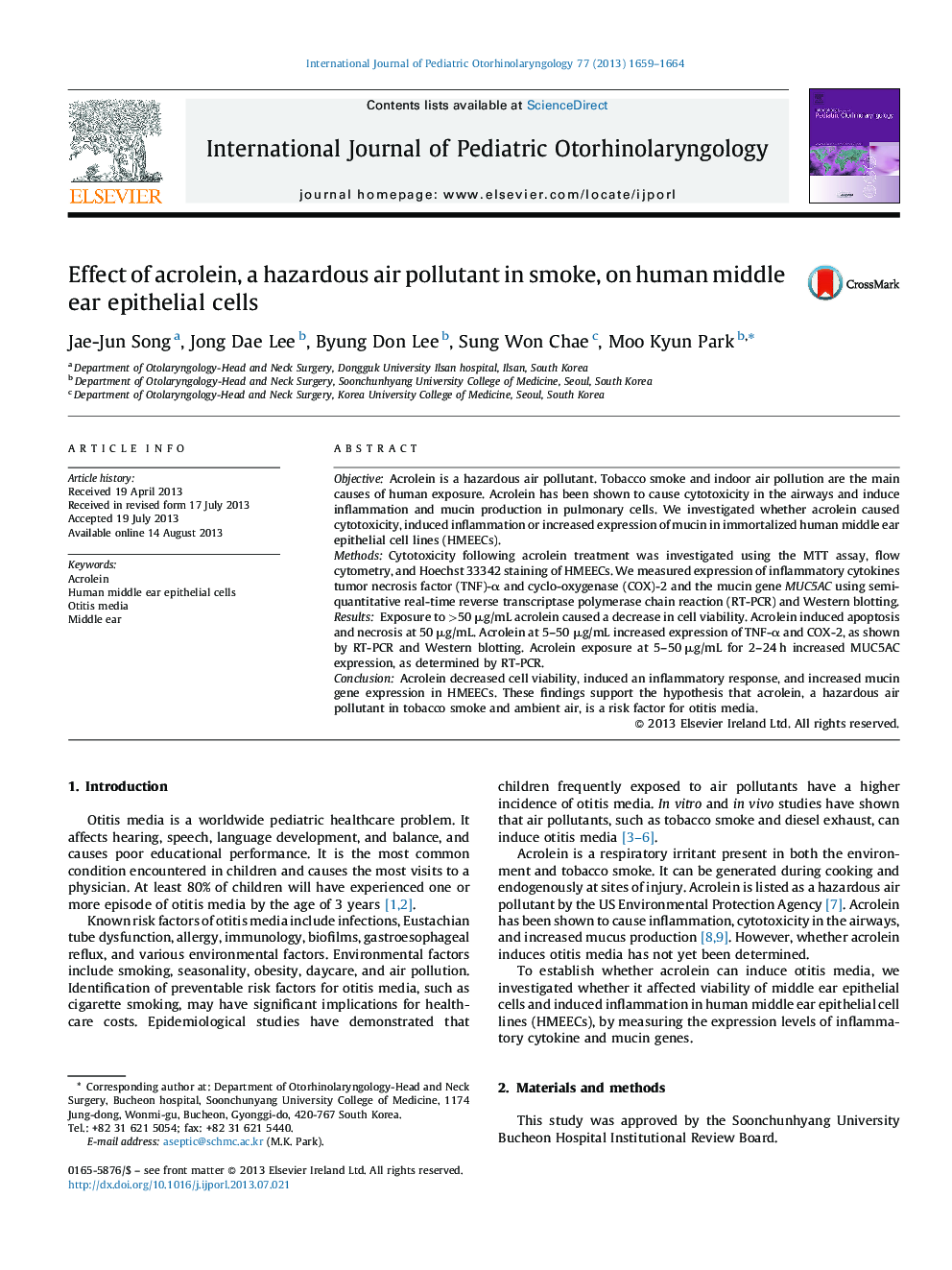| Article ID | Journal | Published Year | Pages | File Type |
|---|---|---|---|---|
| 4112875 | International Journal of Pediatric Otorhinolaryngology | 2013 | 6 Pages |
ObjectiveAcrolein is a hazardous air pollutant. Tobacco smoke and indoor air pollution are the main causes of human exposure. Acrolein has been shown to cause cytotoxicity in the airways and induce inflammation and mucin production in pulmonary cells. We investigated whether acrolein caused cytotoxicity, induced inflammation or increased expression of mucin in immortalized human middle ear epithelial cell lines (HMEECs).MethodsCytotoxicity following acrolein treatment was investigated using the MTT assay, flow cytometry, and Hoechst 33342 staining of HMEECs. We measured expression of inflammatory cytokines tumor necrosis factor (TNF)-α and cyclo-oxygenase (COX)-2 and the mucin gene MUC5AC using semi-quantitative real-time reverse transcriptase polymerase chain reaction (RT-PCR) and Western blotting.ResultsExposure to >50 μg/mL acrolein caused a decrease in cell viability. Acrolein induced apoptosis and necrosis at 50 μg/mL. Acrolein at 5–50 μg/mL increased expression of TNF-α and COX-2, as shown by RT-PCR and Western blotting. Acrolein exposure at 5–50 μg/mL for 2–24 h increased MUC5AC expression, as determined by RT-PCR.ConclusionAcrolein decreased cell viability, induced an inflammatory response, and increased mucin gene expression in HMEECs. These findings support the hypothesis that acrolein, a hazardous air pollutant in tobacco smoke and ambient air, is a risk factor for otitis media.
